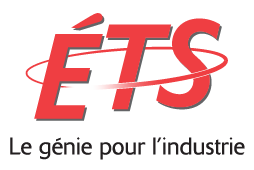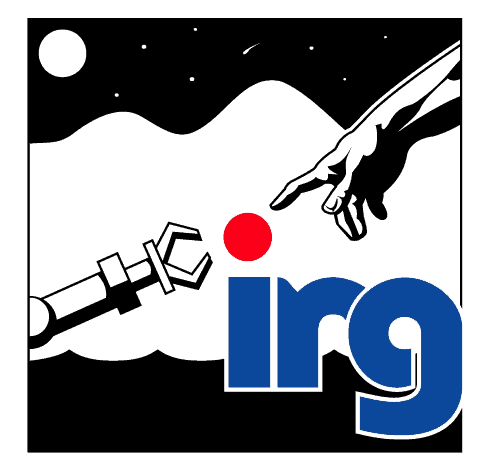Research projects using RTI DDS
In aircraft industry, after labour and fuel costs, maintenance costs are the third largest expense item for both regional and national carriers. By implementing IVHM technologies not only the maintenance costs can be reduced, also it can provide more specific scheduled maintenance, on-board diagnostics and prognostics services. Maintenance department can be notified about the fault in advance and can arrange for components while aircraft is in mid-air. IVHM technologies minimize the physical diagnostics costs and provide more realistic condition based maintenance (CBM). The aim of this project is to investigate, using simulation and optimization, how IVHM network architecture can be built and implemented in aircraft (or IVHM applications), to support interoperability between multiple vendors’ IVHM components and insertion of new IVHM capabilities. IVHM consists of subsystems, sensors, model based reasoning systems for subsystem and system level managers, diagnostic and prognostics software for subsystems. In IVHM systems, usually there is large amount of data (collected from sensors), which needs to be delivered to right places at the right time so communication paradigm is the first and very essential design consideration which impacts many key properties such as scalability, reliability, availability, timeliness and configuration of overall system. The OSA-CBM (Open System Architecture for Condition Based Maintenance) defines an open architecture for moving information in a condition-based maintenance system. Typically, companies developing condition-based maintenance systems must develop software and hardware components, in addition a framework for these components to integrate. OSA-CBM is a standard architecture and framework for implementing condition-based maintenance systems. It not only describes the six functional blocks of condition based maintenance systems but also the interfaces to establish communication.

The project focuses on acquisition, distribution, and storage of health and smart-home data. The university's Ambient Assisted Living lab is continuously running research and development projects that use RTI Connext. The projects are used in under graduate and graduate courses as well as research projects with focus on electronic patient records and distribution of health data.

The focus of the project is to model a wind farm and the data distributed therein. Siemens Wind Power in Denmark is loosely affiliated with the project. The project is used as basis for under graduate and graduate courses as well as research in distributed control systems, network communication, and optimization.

Present project focuses on implementing distributed systems based on IEC61499 components for control applications using DDS technology. More specifically, the design of IEC61499-based components using DDS communications. These automation components are able to map different traffic patterns using DDS entities exploiting the richness of QoS management mechanisms provided by the DDS specification.

The Evolvable Assembly systems project will adopt the methods of context-awareness, multi-agent swarm intelligence and self-adaptation. Context-awareness will provide each individual element with the understating of the surrounding environment; multi-agent swarm intelligence will support system self-organisation based on a community of autonomous and cooperative entities; and self-adaptation will allow the development of a goal driven collective behaviour leading to purposeful system evolution. The proposed programme is a radical departure from the current philosophy of reconfigurable manufacturing - it will create a framework for autonomous context-aware and adaptable assembly and manufacturing systems that can co-evolve with products, processes and business and social environment. This transformational approach presents theoretical, technical and social challenges that demand new fundamental multidisciplinary research.
![]()

The Cloud Manufacturing research project investigates how digital technologies can enable 'on demand' manufacturing. The research adopts the methods of cloud computing and crowdsourcing, hence bringing new models for open innovation within the manufacturing space to enable new organisations to arise without the need for a large capital investment. This approach proposes a radical departure from the current philosophy of manufacturing ICT and we are exploring the benefits of using Connext DDS as part of a multi-layered architecture where manufacturing entities participate and contribute with information, and support different services to the manufacturing life cycle, supply chain, consumers and users of the products.
Cloud Manufacturing: a proof of concept of Manufacturing-as-a-Service. G. Terrazas, D. Sanderson, E. Kelly, S. Ratchev. In 3rd EPSRC Manufacturing the Future Conference, 2014
![]()

CRIAQ AVIO-509 project is a research project on the design of modular avionics architectures and integrated commonly called IMA (Integrated and Modular Avionics). The main purpose of this research project aims to explore the design methodologies IMA systems and evaluate the impact of architectural decisions. A platform for experimentation will be developed to enable prototyping IMA systems. An application of synthetic vision increased (ESVS) will be implemented on this demonstrator IMA. CMC Electronics Inc. and CAE companies. are partners in this project and the École Polytechnique de Montreal. The project has a duration of three years (2011-2014).
Within this project, we are analysing the benefits of using Connext DDS for communications between different nodes of an avionic system.


Building large and complex distributed systems required in Defence pose challenges in ensuring that the functional system specifications of processing and network performance are achieved while at the same time the non-functional properties of space, weight and power are optimised. Current research into performance measurement and prediction is achieved through modelling the system behaviour and interactions and observing the execution on several alternative deployment environments. We use RTI DDS as the middleware extensively for data mining and logging of system executions. Observation of the execution is enhanced by the RTI DDS built-in management topic for publications and the dynamic data features available. Data Distribution Service (DDS) middleware enables a distributed system to be modelled and executed on a wide range of hardware such as IBM blade servers through to low cost single board computers such as the Raspberry Pi. Such a broad range of deployment environments is essential to our current research into software architectures, model-driven engineering and distributed systems design.
Further information about this research project is available from:
http://blogs.adelaide.edu.au/dig/


The main objective of PLANET project is the design, development and validation of an integrated platform to enable the deployment, operation and maintenance of large-scale/complex systems of heterogeneous networked Cooperating Objects, including Wireless Sensor and Actuator Networks and mobile objects. The platform supports optimal and adaptive deployment and operation by means of mobile cooperating objects, i.e. vehicles, networked with static nodes. The platform is validated in two complementary scenarios: the monitoring of the Doñana Biological Reserve with very high ecological value and very sensitive to the impact of pollution, and the highly automated airfield scenario in which security plays an important role and where wireless communication and cooperative techniques pose significant challenges.
PLANET addresses the design methodology and development of the platform as well as the algorithms required to support the deployment and maintenance of heterogeneous systems with mobile and static nodes.
We use RTI DDS as the middleware for the communication between heterogeneous Cooperating Objects, such as UAVs, UGVs and ground sensor networks. Upon RTI DDS we build a set of PLANET services to ease the deployment, operation and maintenance of heterogeneous networked Cooperating Objects.
For more information of the Project PLANET, you are welcome to visit the website: http://www.planet-ict.eu/

The Intelligent Robotics Group (IRG) explores extreme environments, remote locations, and uncharted worlds. We conduct applied research in computer vision, geospatial data systems, human-robot interaction, planetary mapping and robot software. (IRG brochure)
IRG operates the "K10" series of planetary rovers (slideshow, fact sheet). We conduct robotic field tests each year in planetary analog sites, such as Black Point Lava Flow and Haughton Crater.

